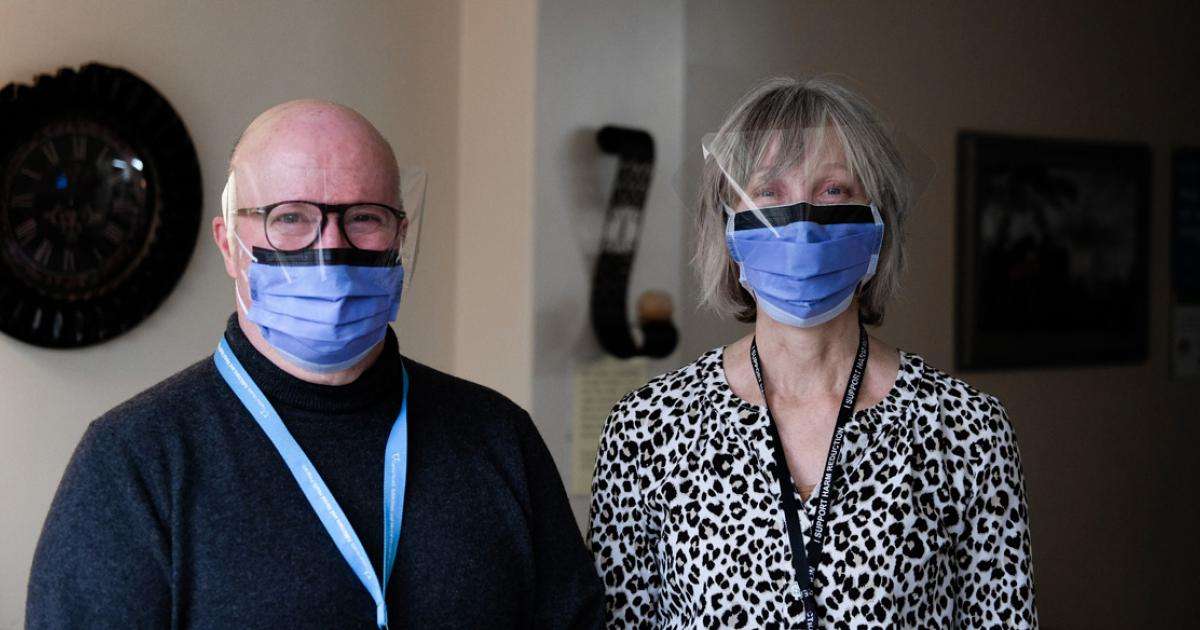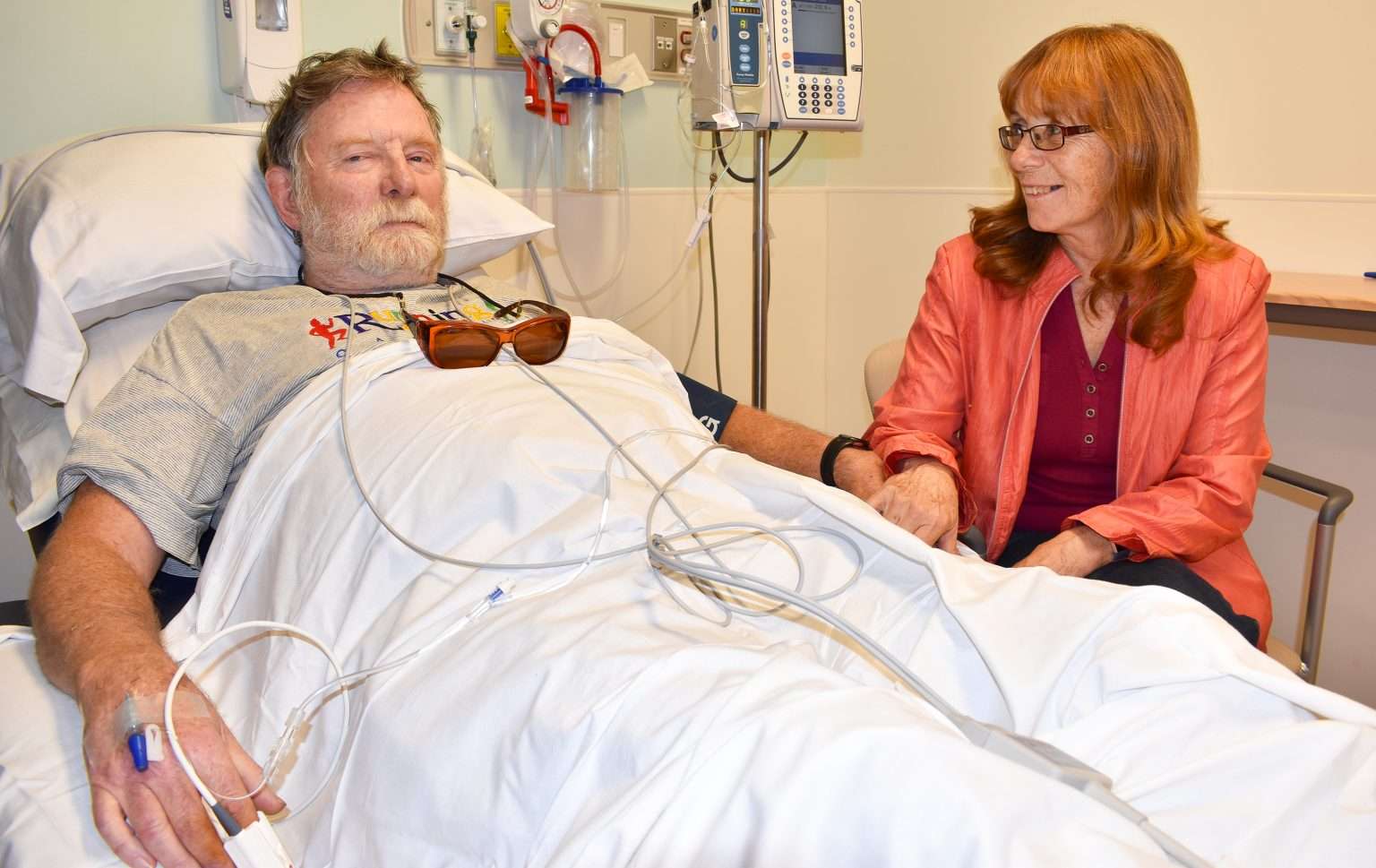Its Effective For Treatment
Up to 33% of people with depression dont respond to multiple kinds of conventional antidepressants. Esketamine reduces depression symptoms in a majority of these people in clinical trials.
The only other approved drug therapy for treatment-resistant depression is a combination of olanzapine and fluoxetine . However, this treatment has significant long-term effects that include substantial weight gain, metabolic changes, diabetes and high blood pressure.
Search For Underlying Conditions
Finding an underlying condition causing your depression could be the key to the right treatment. Talk to your psychiatrist and review your medications as well.
Thyroid diseases, diabetes, and other illnesses can worsen depression. You may need referrals to see other specialists to manage these conditions.
One drug you may consider adding to your depression treatment is ketamine. You can use this alongside antidepressants. Doctors prescribe ketamine because it provides fast relief of depression symptoms. The effects can last from days to weeks.
Stick To Your Treatment Plan
Even if you feel better, its advisable to keep taking your medications as prescribed and continue going to therapy. Depression symptoms could return if you stop treatment.
If you have concerns about your medications, such as side effects that you dont like, your psychiatrist may have other options.
Recommended Reading: How To Cure My Depression
How Do Ketamine And Esketamine Work
Both ketamine and esketamine reduce the symptoms of depression by stimulating different parts of the brain.
Ketamine doesnt stimulate the same area of the brain that SSRIs target. Instead,experts believe that ketamine encourages the regrowth of the connection between neurons. In this way, ketamine helps to rewire the brain.
Esketamine works to restoresynaptic connections in your brain cells. Other antidepressants dont work in this same manner. According tothis press release, Spravato can start to work in just a few hours.
What Is Esketamine Treatment Like

Esketamine, like ketamine, has the potential to distort your perception during the first two hours after treatment, so it has to be administered in a clinic setting. Treatment for esketamine nasal spray is done on an outpatient basis.
With the nasal spray, you give yourself three doses, spaced five minutes apart, under doctor supervision. You remain in the clinic under doctor observation until potential side effects have passed.
Esketamine must be used in conjunction with a conventional antidepressant. The intention is that esketamine provides rapid relief from depression symptoms until the other medication takes effect.
Recommended Reading: 5 Ways To Fight Depression
Unmet Needs In The Treatment Of Bipolar Disorder
Do you want to thank Dr. Masand for this information? Then please take this short survey. This survey is designed to pinpoint the unmet needs in the treatment of bipolar, and we all know there are many. Its important as its one way that patients can speak directly to doctors and make their thoughts known.
There Is Hope For Treatment
Therapy, lifestyle changes, and medication are three tried-and-true depression treatments. Many people find that a combination of these treatments is enough to ease their symptoms. However, for some people, thats not the case. As many as15% of people dont respond to antidepressants, and40% only receive partial relief.
If your depression isnt alleviated with medication, its called treatment-resistant depression. The good news is,Dr. Hadi Estakhri at Allied Psychiatry and Mental Health offers hope for those with this type of condition. Ketamine therapy and Spravato nasal spray are both available at our Newport Beach, California clinic.
In this article, well explore whatketamine treatment is and how it can help treat depression, even if medications arent working.
Recommended Reading: Does Working Out Help With Depression And Anxiety
Building On Success: Whats Next In Ketamine Research
The job is not done for TRD. Ketamine and esketamine work, but both have significant drawbacks. Many patients experience uncomfortable dissociative symptoms, hypertension, or other side effects for a few hours after administration. Because of these symptoms, as well as the potential for abuse, both need to be administered in a doctors office. These arent medications you can pick up at the pharmacy and take on your own. Dr. Zarate and others are hard at work at finding safer alternatives to ketamine by examining the mechanisms by which it works. One such promising compound, a metabolic product of ketamine, was identified through a collaboration between Dr. Zarate and Todd Gould, Ph.D., of the University of Maryland School of Medicine. A cross-institute collaboration between NIMH, National Institute on Aging, and the National Center for Advancing Translational Science is developing this agent in order to test its efficacy in patients with TRD.
The Severity Of Your Symptoms
Depression can keep people from enjoying life, finishing the things they need to do, or even holding a job. In fact, the condition can be so debilitating that it is the number one cause of disability around the globe. When a patients symptoms are this severe, TMS can help.
However, TMS requires a larger time commitment than medication. Patients typically receive treatments for 30 minutes per day, five days per week for at least a few weeks. This commitment is often worth it for people who cannot continue daily life without it.
Recommended Reading: Where To Go For Help With Depression
How Ketamine Infusion Therapy Offers New Hope For Patients With Treatment
More than 17 million people struggle with major depression in the United States, making it the largest mental health care concern in our country. As if the grips of depression arent awful enough, treatment can be frustrating as people respond differently, or not at all, to the traditional medications and protocols. Last year, however, the mental health community received a welcome addition to its treatment arsenal when the FDA approved a form of ketamine for treatment-resistant depression.
At the Institute for Advanced Psychiatry, Dr. Diana Ghelber and our team routinely help our patients find solutions for a wide range of mental-health issues, from post-traumatic stress disorder to major depression. With the understanding that no people are alike when it comes to mental health problems, we make every effort to offer the latest treatment protocols and one that were particularly excited about is ketamine infusion therapy, which is showing great promise in helping people with treatment-resistant depression reclaim their lives.
Heres a look at how our ketamine infusion therapy is offering new hope for those who are caught in a web of life-altering depression:
A Sensorimotor Approach To Change
The very nature of depression often thwarts efforts to treat it. After all, its difficult to change when you have no energy, no hope, and no capacity to concentrate. How can we challenge these chronic states? Using interventions from Sensorimotor Psychotherapy, this workshop will introduce ways to help clients relate to their depressive symptoms mindfully, rather than identifying with them, and to manage physical symptoms through changes in posture, breath, and energy. Youll discover how to:
- Help clients separate depressive thoughts from physical symptoms so that each can be treated separately
- Counter cognitive beliefs that reinforce depressive states by experimenting with new words, new actions, and new habits
- Use body-centered interventions, such as movement, to increase energy and focus in depressed clients
- Facilitate development of an antidepressant lifestyle rather than habitual engagement in the opposite
is a licensed clinical psychologist and instructor at the Trauma Center in Boston, a senior faculty member of the Sensorimotor Psychotherapy Institute, and a former instructor at Harvard Medical School.
Note: This workshop is live.
Recommended Reading: How Can My Boyfriend Help Me With Depression
Esketamine Decreases Suicidal Thoughts
Conventional antidepressants may actually increase suicidal thoughts at the beginning of treatment, especially in children and young adults. Esketamine is the only drug besides lithium, a drug commonly prescribed for bipolar disorder, thats proven to decrease suicidal thoughts, says Kaplin. Although esketamine isnt currently approved for this purpose, the FDA is considering it.
How Is It Administered

Ketamine is administered via a slow intravenous infusion. Treatments typically begin with a series of 6 infusions occurring over a two-week time period. After the initial infusions, maintenance infusions occur at individualized time intervals. The dose used for the treatment of mood and anxiety disorders is very low and safe.
About the Author
Robert Amorde, MD is a medical provider in the Fox Cities where he has practiced Anesthesiology for the past 10 years. He has been the medical director of the Ketamine Wellness Center since it opened in 2018. Dr. Amorde holds a bachelors degree in chemistry and biochemistry from the College of St. Scholastica and a Medical Degree from Loyola University Chicago, Stritch School of Medicine.
References
Berman, R. M., Cappiello, A., Anand, A., Oren, D. A., Heninger, G. R., Charney, D. S., & Krystal, J, H. . Antidepressant effects of ketamine in depressed patients. Biological Psychiatry, 47, 351-354.
Recommended Reading: Depression And Anxiety Center For Discovery And Treatment
Finding A Depression Biomarker
The first challenge for researchers was finding a biomarker for Sarahs depression. This information would allow them to detect the abnormal brain activity causing the depression, so they could target the electrical bursts to disrupt the right area at the right time.
Existing neurostimulation devices deliver constant electrical stimulation to the brain, so the team needed a way to detect and disrupt brain activity related to the depression when it was occurring.
To do this, the researchers carried out brain mapping, placing 10 electrodes across the left and right hemispheres of Sarahs brain and recording neural activity across 10 days. Sarah reported the severity of her depressive symptoms using symptom rating scales during this time.
The researchers found that gamma frequency brain waves in a part of the brain known as the amygdala were most closely correlated with depressive symptoms. They could, therefore, use these as a biomarker for her depression.
Next, the researchers had to figure out how to disrupt these brain waves. They found that placing an electrode in the ventral capsule/ventral striatum at the base of the brain gave the most consistent improvement of symptoms when they applied electrical stimulation upon detecting abnormal brain activity in the amygdala.
Optimization of this process showed that applying very small amounts of electricity 1 milliampere for just 6 seconds at a time was sufficient to improve Sarahs symptoms.
Ketamine Is Hope For Treatment Resistant Depression
Hello and welcome. My name is Susan. I am a huge advocate of Ketamine therapy for depression. I write about my experiences with Ketamine treatments on my website, MyKetamineStory.com. I want to introduce myself to you because educating others on this new method of treating depression is so very important to me. I am 100% convinced that had I not been told about Ketamine, I would not be sitting in front of my computer writing this opening. As an introduction, I have treatment resistant depression, anxiety disorder, and Obsessive Compulsive Disorder but that isnt who I am.
I live in Virginia. I have a passion for writing and photography. I enjoy my job as a newborn photographer at my local hospital. I also love sewing and crafting. I basically love the arts. I am at my best when I am creating. I am married and have one child. My husband and son are my major support system without Geoffrey and Matthew my life would be empty. I enjoy and thrive on learning new things. It makes me feel I have a purpose in life when I am helping others. My intention with this blog is to reach out to others with clinical depression and turn on a light of hope. Ketamine is my life preserver and it may possibly be yours, too.
My blog is my journey. I pray that others suffering will somehow find their way to my website so I can introduce them to the possibilities of Ketamine.
Also Check: Plants That Help With Anxiety And Depression
Depression May Have Causes We Dont Yet Understandwhich May Be Why Antidepressants Dont Work For Everyone
I saw many patients with treatment-resistant depression who told me that friends and family members believed they preferred being depressed, or werent trying hard enough to improve, because their antidepressants werent working. This isnt about a lack of motivation.
Jaskaran Singh, M.D., Senior Director of Neuroscience, Janssen PharmaceuticalsShare
While the biology of depression is still largely a mystery, the most popular theory is that its caused by low brain levels of such neurotransmitters as serotonin and norepinephrine, which are associated with feelings of happiness and well-being. But recent research suggests that these neurotransmitters may not be the lone culpritso antidepressants, which work to increase serotonin or norepinephrine levels, may not be a one-size-fits-all treatment.
One of the more modern theories is that depression creates inflammation in the brain, or that inflammation in the brain creates depression, Dr. Papp says. Traditional antidepressants only affect neurotransmitters, so this may be why some patients dont respond to them.
Whether or not this turns out to be true, what we do know is there’s still no guaranteed fix for the problemwhich can be frustrating for both patients and their loved ones.
Translating Neural Circuits Into New Insights
For Sarah, the past year has offered an opportunity for real progress after years of failed therapies.
In the early few months, the lessening of the depression was so abrupt, and I wasnt sure if it would last, she said. But it has lasted. And Ive come to realize that the device really augments the therapy and self-care Ive learned while being a patient here at UCSF.
The combination has given her perspective on emotional triggers and irrational thoughts on which she used to obsess. Now, she said, those thoughts still come up, but its justpoofthe cycle stops.
While the approach appears promising, the team cautions that this is just the first patient in the first trial.
Theres still a lot of work to do, said Scangos, who has enrolled two other patients in the trial and hopes to add nine more. We need to look at how these circuits vary across patients and repeat this work multiple times. And we need to see whether an individuals biomarker or brain circuit changes over time as the treatment continues.
FDA approval for this treatment is still far down the road, but the study points toward new paths for treating severe depression. Krystal said that understanding the brain circuits underlying depression is likely to guide future non-invasive treatments that can modulate those circuits.
Added Scangos, The idea that we can treat symptoms in the moment, as they arise, is a whole new way of addressing the most difficult-to-treat cases of depression.
Read Also: Is It Hard To Get Disability For Depression
Tms Therapy: Hope For Those With Treatment
Depression is a common mental health disorder. Its a leading cause of disability worldwide and a major contributor to the overall burden of disease, according to the World Health Organization. And while there are many ways to treat depression, between 76% and 85% of people in low- to middle-income countries receive no treatment for their disorder.
Here in the United States, major depressive disorder affects roughly 17.3 million Americans. While treatment is more accessible, many people are still left untreated and may self-medicate with drugs, alcohol or other harmful behaviors. Depression also co-occurs with other illnesses, including cancer, stroke, heart attack, diabetes, eating disorders and substance use disorders.
New Hope For Treatment
Pictured: an example of rTMS treatment.
$420,000 donation from Bell Lets Talk to the QEII Foundation to bring a life-changing brain stimulation technique to Nova Scotians living with depression
At first glance, the chair is nothing special to look at. It reclines and offers head support much like a dentists chair.
An example of rTMS treatment
But this is not an ordinary chair, and you wont find it at your hygiene appointment. This is an rTMS chair used in conjunction with advanced technology and magnetic coils that deliver what can be a life-sustaining treatment. An innovative, evidence-based treatment called repetitive transcranial magnetic stimulation .
What is that, exactly? In short, its a type of brain stimulation for treating symptoms of depression. The recipient sits in the chair, resting their head in a position that allows a healthcare provider to access their scalp, gently applying specialized paddles that deliver magnetic pulses through coils.
And what does that achieve? The magnetic pulses stimulate target areas in the brain to alleviate symptoms of depression. Just like an antidepressant medication, it has the power to change neuronal activity.
We often hear people use the term depression to describe feelings of sadness or even disappointment. For a psychiatrist, like Dr. Michael Flynn of the Nova Scotia Hospital, the term describes something very different.
Don’t Miss: What Not To Say To A Depressed Person
Esketamine Helps The Brain Form New Connections
Research suggests that untreated depression causes long-term brain damage and is a risk factor for dementia. Studies show that people with depression have up to 20% shrinkage of the hippocampus, a region of the brain critical for memory and learning. But esketamine may counteract the harmful effects of depression.
Animal studies indicate that connections between brain cells diminish under chronic stress, but esketamine reverses these stress-related changes. Esketamine is different than any other antidepressant in that it not only prevents the neurotoxic effects of depression on the brain, but it also seems to have a growth-promoting effect, explains Kaplin.
How To Treat Treatment

Depression has multiple causes and affects the brain in many ways. One main reason depression develops is due to low levels of serotonin, dopamine, or norepinephrine. Antidepressants address these issues.
There are a number of causes that lead to depression. These include:
- Brain inflammation
- Reduced brain volume
- Changes in gut flora
Research is still ongoing to figure out why depression occurs. However, when we know the cause, we can easily find a treatment.
As we mentioned before, treatment-resistant depression isnt affected by standard treatment. Instead, you can try some of the following alternative therapies.
Don’t Miss: Things To Tell A Depressed Person